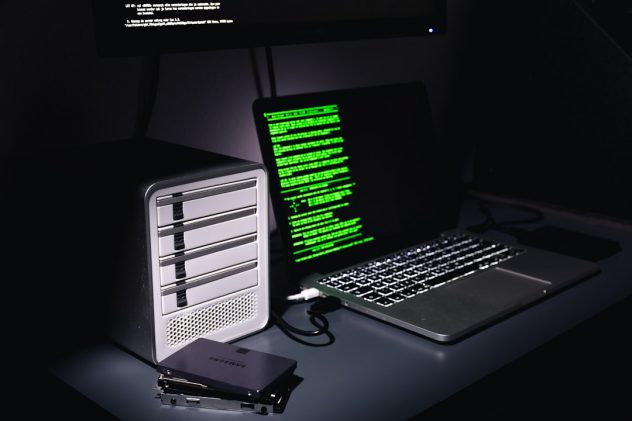You’re just about to start your day. You grab some coffee, turn on your PC and BAM — a blue screen with a cryptic error: 0xc00000f. It’s like Windows decided to ruin your morning. Don’t worry though! This error looks scary, but it’s actually pretty fixable.
We’ll walk you through it step by step. No tech jargon, no stress. By the end of this article, you’ll be the neighborhood tech hero!
What is Error Code 0xc00000f?
This error usually means your computer has boot issues. Imagine Windows trying to wake up but forgetting where it left its shoes. That confusion shows up as this code.
Usually, it means:
- Your boot configuration is messed up.
- A system file got corrupted or went missing.
- Your hard drive has issues.
- You unplugged something important while Windows was still booting up.
Good news? It’s an error we can totally fix together!
Things You’ll Need
- A working PC to create a Windows 10 installation media.
- A USB drive (at least 8GB).
- Some patience and maybe a snack 🙂
Step 1: Create a Windows 10 Bootable USB
Grab a USB and plug it into a working computer. Now go to the Windows 10 download page.
Click on Download tool now. Once it’s downloaded, run it. When prompted, select:
- Create installation media (USB flash drive)
Follow the steps. It might take a few minutes to get everything copied over. Once done, plug that USB into your problem computer.
[ai-img]windows boot usb, computer, troubleshooting[/ai-img]
Step 2: Boot from the USB
Restart your computer and boot from the USB drive. This usually means pressing F2, F8, F12, or ESC during startup. Every computer is a little different.
You’ll see the Windows setup screen. Choose your language, time, and keyboard, and click Next.
Now click on Repair your computer at the bottom left.
Step 3: Use Automatic Repair
Once you click on Repair your computer, go to:
- Troubleshoot
- Advanced options
- Startup Repair
Windows will take over here and try to find and fix any startup problems. It may take several minutes. If it works, you’ll be up and running. If not, don’t worry—we have more tricks!
Step 4: Rebuild the Boot Configuration Data (BCD)
If Startup Repair didn’t do the trick, let’s fix the boot records manually. It’s easier than it sounds!
Go back to:
- Troubleshoot
- Advanced options
- Command Prompt
At the black command prompt screen, type these one at a time. Press Enter after each:
bootrec /fixmbr bootrec /fixboot bootrec /scanos bootrec /rebuildbcd
After finishing, close the Command Prompt and restart your computer. If you’re lucky, the error is gone!
Step 5: Check for Loose or Damaged Cables
Sometimes this error has nothing to do with software. Your hard drive cable might just be loose! Turn off your computer and open the case. Gently check connections to your hard drive. Make sure everything is snug and dust-free.
[ai-img]inside computer, check cables, pc hardware[/ai-img]
If you’re not comfortable opening the case, ask someone handy or visit a repair shop. No shame in that!
Step 6: Run CHKDSK for Disk Errors
Let’s check your hard drive for damage. Again, go to:
- Troubleshoot
- Advanced options
- Command Prompt
At the command prompt, type:
chkdsk C: /f /r
This checks and attempts to fix any hard drive errors. It may take a while, especially if there are lots of files. Grab that snack we talked about earlier.
Step 7: Try System Restore
If you’ve created restore points in the past, this step can rescue you!
Again, head over to:
- Troubleshoot
- Advanced options
- System Restore
Choose a restore point from before the problem happened. Let it roll back your system to the good ol’ days.
Step 8: Replace Corrupt System Files
Still no luck? Let’s replace any broken or missing system files.
At the Command Prompt, type:
sfc /scannow
This System File Checker will dig through your Windows files and fix what’s wrong. It won’t delete your stuff — it just patches things up.
Bonus Tip: Use BIOS Defaults
Sometimes weird BIOS settings cause issues. Restart the computer and get into BIOS. (Usually F2, DEL, or ESC at startup.)
Look for the Load Setup Defaults or Optimized Defaults option. Save and exit. See if your PC boots now.
If All Else Fails…
As much as we hate to say it, if nothing works, a clean install of Windows 10 might be the only way out.
When you boot from that USB installation drive again, this time choose Install now.
Pro tip: Back up any important files before doing this. You’ll start fresh, so you don’t want to lose photos, documents, or that high score in Solitaire.
How to Avoid Error 0xc00000f in the Future
- Don’t suddenly turn off your PC while it’s updating.
- Try not to unplug things mid-boot.
- Keep backups, just in case.
- Run disk checks every few months.
Think of your PC like a pet. A little love and care go a long way. 🙂
Final Thoughts
Error 0xc00000f can be a punch to the gut, but you’re not powerless. With some time (and maybe that second coffee), you can conquer it.
We’ve walked through creating bootable media, fixing the boot data, checking cables, running commands, and more. Hopefully one of these did the trick for you.
[ai-img]error screen, windows solution, pc help[/ai-img]
Still stuck? Don’t be afraid to reach out to a friend or see a professional. Sometimes we all need a little help.
But hey, if your PC is now back in action — give yourself a high-five! You just saved the day!
